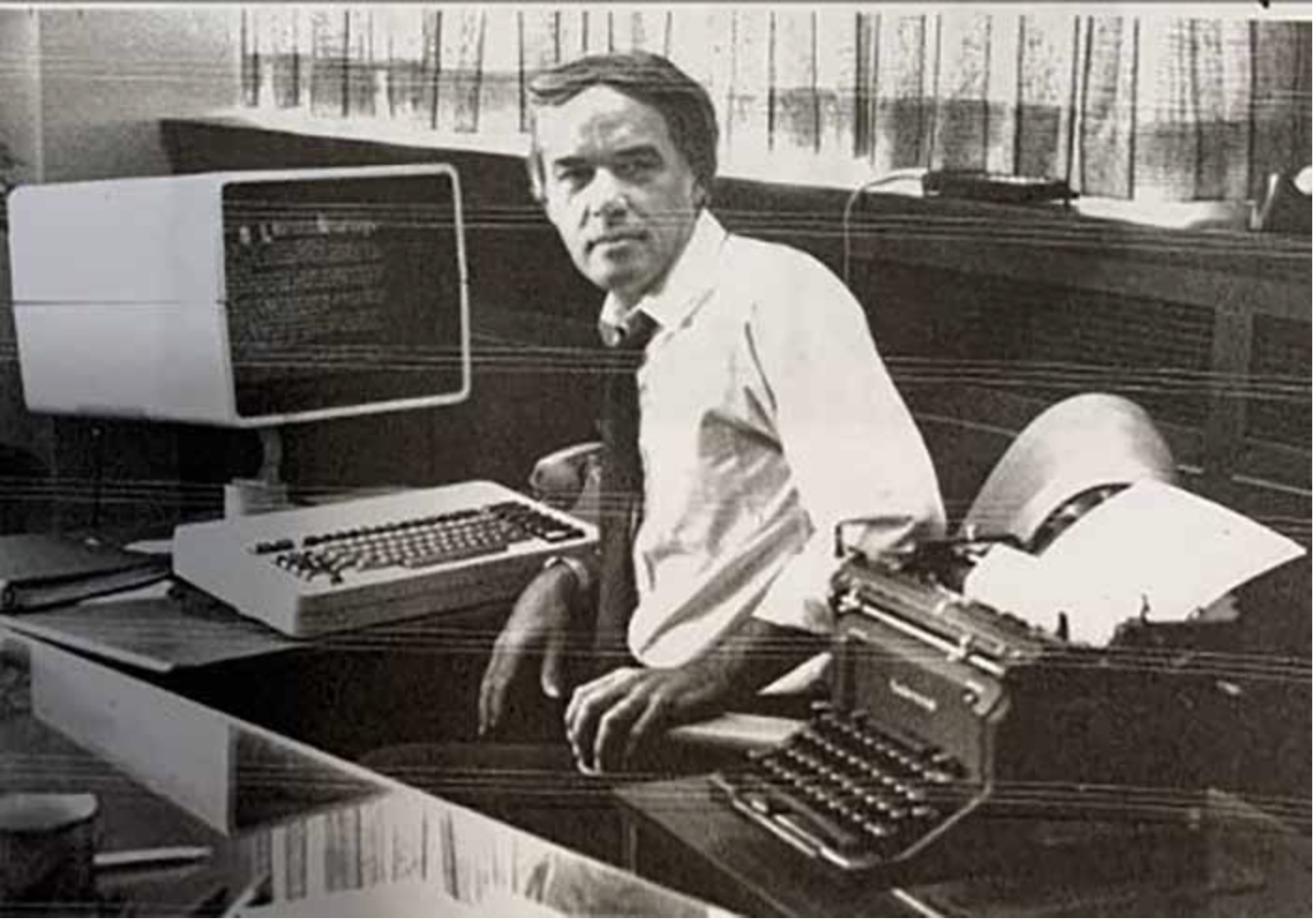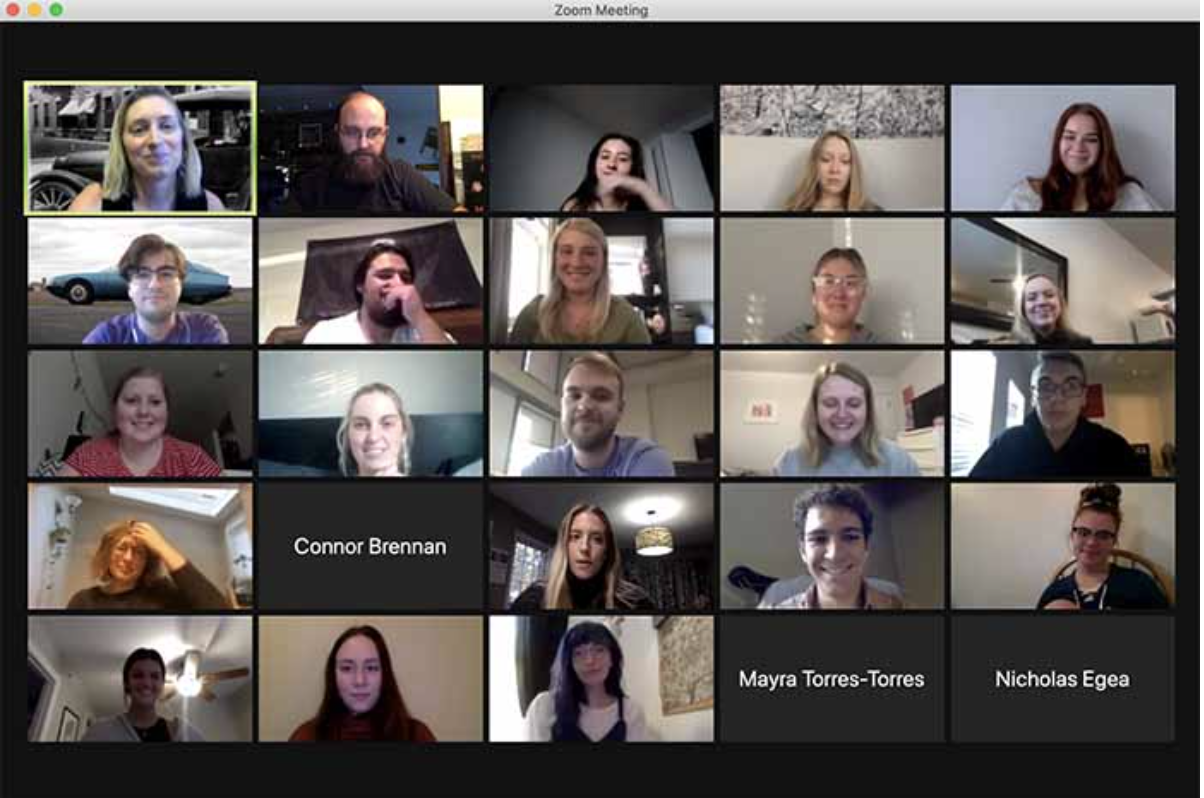KU class produces oral history of Kansas journalism

LAWRENCE — University of Kansas students are putting the finishing touches on an oral history of Kansas journalism that will tell the story of seven notable Kansas news figures. The project will provide a new perspective of how the profession has evolved over the last half-century in middle America while documenting the importance of community and rural journalism.
Teri Finneman, associate professor of journalism at KU, is leading the class and has dedicated much of her career to preserving journalism history in the Heartland. She has produced oral histories of journalism in both North and South Dakota, and she produced the documentary “Newspaper Pioneers: The Story of the North Dakota Press.” Supported by a General Research Fund grant from KU, she and her class have interviewed journalists, documented their experiences, gathered historical photographs and produced podcasts to be donated to the Kansas Historical Society and made available to the public in early 2021.
“It is important to me to capture the history of community and regional journalism history, especially as so much of the field’s history focuses on New York and urban areas,” Finneman said. “I like to document and maintain the history of journalism in the middle of the country, and it is vital that we do it while longtime journalists are still with us. This class alone will have contributed over 500 pages of Kansas journalism history that we will share with the Kansas Historical Society and Kansas Press Association.”
Class members have worked in groups to interview seven Kansas journalists about their career experiences. In consultation with the Kansas Press Association, they selected Doug Anstaett, consultant, legislative lobbyist for KPA and longtime reporter editor and publisher; Linda Denning, editor and publisher of the Ellsworth County Independent-Reporter; John Hanna, Topeka correspondent for the Associated Press; Sharon Kessinger, former publisher and editor of the Marysville Advocate; Craig McNeal, former owner and publisher of the Council Grove Republican; Buzz Merritt, former editor of the Wichita Eagle; and Tom Throne, editor and general manager of the Junction City Daily Union, and editor and publisher of the McPherson Sentinel and Leavenworth Times.
In addition to preserving stories that might otherwise be lost, the students have learned about the evolution of the profession in Kansas and how it has changed as society has evolved over the years. Publishers shared stories about how technology changed how they do their jobs as well as how treatment of women had improved over the years, both as employees and how they were represented in the pages of their newspapers. Lessons about the changing business model were documented as well.
“We learned a lot about the way things are progressing now and how profit motives have changed,” said Sam Blaufuss, KU student. “The idea of journalism playing an important role in society, and not just as a way to make a living, is something I’d like people my age to understand better.”

Understanding how the field has changed can also be an important lesson as journalism is in the midst of rapid change in everything from how it is gathered and presented to how it is consumed and paid for.
“In times like today when we are experiencing a lot of turmoil, it’s important to provide context that this is not the first time journalism has seen change and that we can take lessons from the past on how we can endure,” Finneman said.
Emma Bascom, a student involved in the history projects, agreed.
“It goes with the idea that those who forget history are doomed to repeat its mistakes,” she said. “I think it’s vital to preserve these first drafts of history.”
The journalists also provided insight into the different ways community journalists practice their craft every day and the important role they play in helping inform their readers about their local governments.
“One of the things I found out right away was that, given how rural Kansas is, you have to be multifaceted as a journalist. It’s not as specialized as it is in larger places, so you have to be able to do a lot of things well,” said student Carlos Peterson.
The class also will make a virtual presentation for the journalists who shared their stories and time for the project. While the pandemic made in-person interviews an impossibility, it did inspire the class to start a separate oral history project on how COVID-19 has changed journalism education. Students are conducting interviews with fellow students, faculty, graduate students and building staff — from custodians to program supporters — on how the business of teaching journalism changed with the onset of the coronavirus in 2020.
Finneman, who is executive producer of the podcast Journalism History and serves on the board of directors for the American Journalism Historians Association, said that as the class has helped preserve history of several notable Kansas journalists for future generations, she hopes the project has also helped instill an appreciation of community journalism for both students and those who will experience their work.
“What I hope they take away is the importance and value of community journalism,” she said. “It is the heart of journalism in this nation, and I don’t think that gets emphasized enough. By talking with these community journalism figures, it opens their minds to the opportunity of working in this part of the country and the impact you can have here. And I think these people are important historical figures. This is about providing a more complete historical record of our state, of journalism and those who created it.”
Top image: Buzz Merritt pictured at his desk with two generations of newspaper technologies. Credit: Buzz Merritt.
Updated on: 12/01/2020